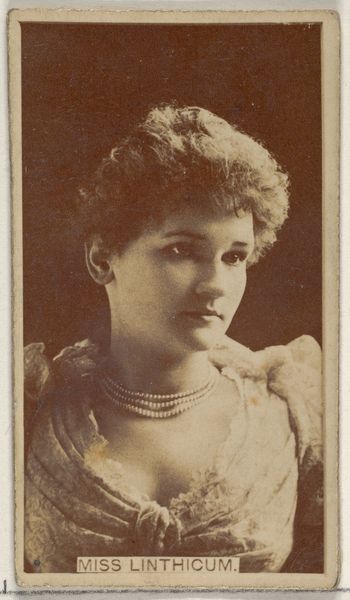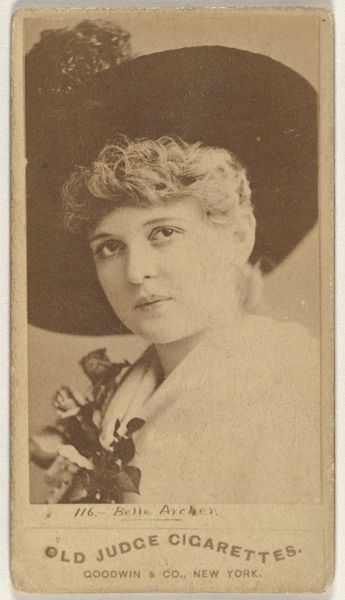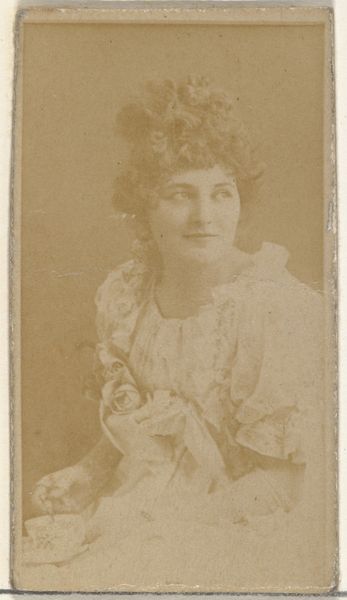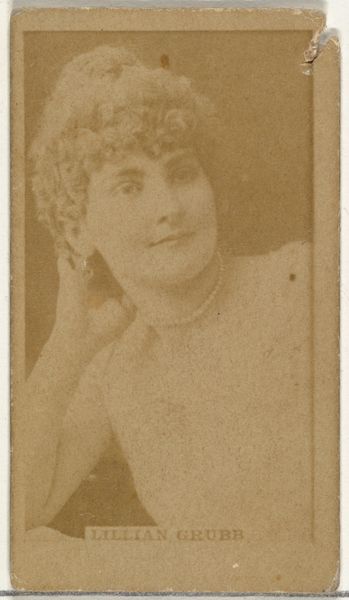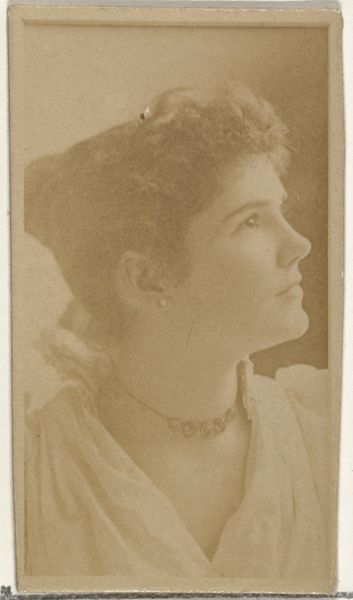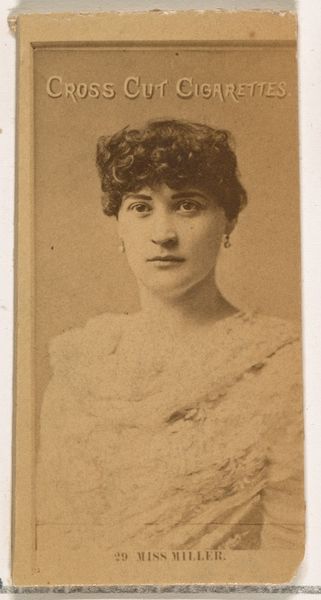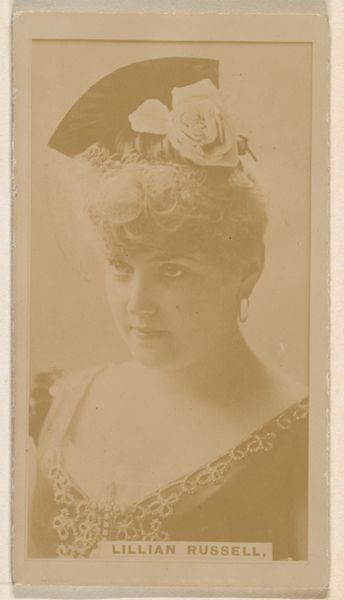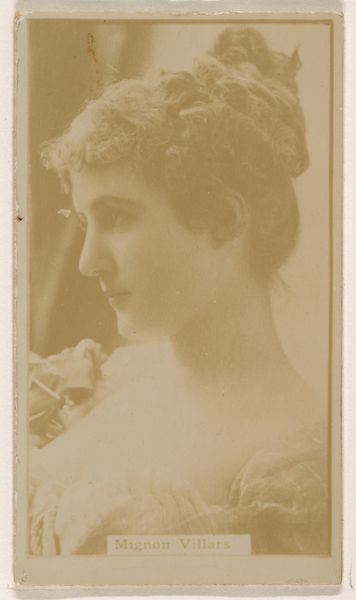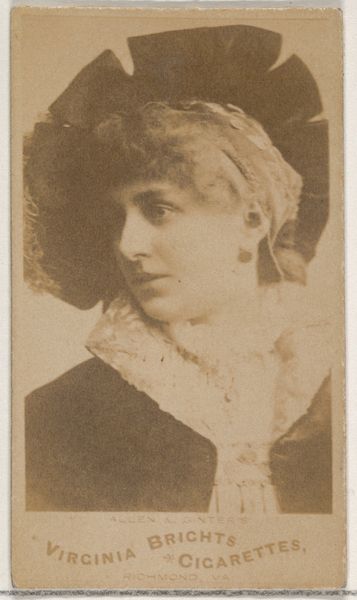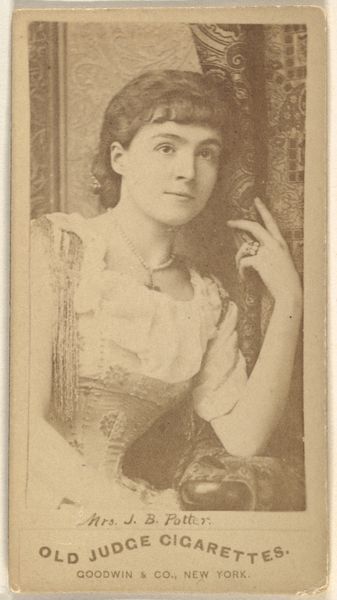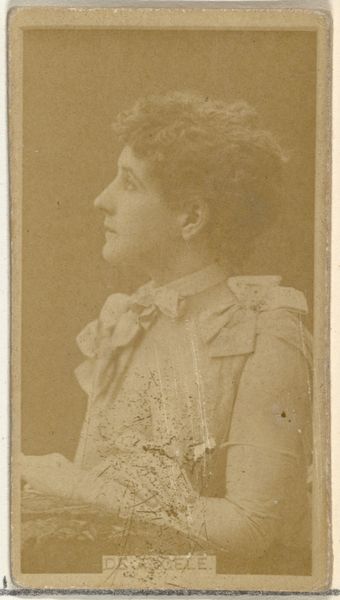
Miss Linthicum, from the Actors and Actresses series (N145-8) issued by Duke Sons & Co. to promote Duke Cigarettes 1890 - 1895
0:00
0:00
drawing, print, photography
#
portrait
#
drawing
# print
#
photography
Dimensions: Sheet: 2 11/16 × 1 3/8 in. (6.8 × 3.5 cm)
Copyright: Public Domain
Editor: So, this is “Miss Linthicum,” a photo print from Duke Sons & Co., dating back to the late 1890s. It’s surprisingly small, like a playing card. What's fascinating to me is how it captures this elegance yet also feels… manufactured, almost disposable, which I guess was the point since it's advertising. What do you make of it? Curator: Precisely that tension between the intended function as capitalist ephemera and its potential as a document of material culture is key here. Think about the tobacco industry: The physical object of a cigarette becomes intrinsically linked to the commodification of glamour. The image itself becomes a currency within that social transaction. Editor: So, the card is both art and advertisement. How did this blend influence the perception of art at the time? Curator: This sort of commercial image democratized image production and consumption, creating access that fine art traditionally excluded. Examining the industrial processes behind the mass production, photography, printing techniques, reveals a change in social values that occurred alongside the rise of consumerism. These items document celebrity culture in the making. Does knowing its origin affect your appreciation? Editor: It does. I initially saw a portrait of an actress. Knowing it promoted cigarettes changes the tone completely; suddenly it becomes less about her and more about what she sells. Curator: Absolutely, consider also the conditions in which it was made - who were the workers and the working conditions. Are they implicated in its appeal? These "lowly" materials yield fascinating truths. Editor: It’s interesting to consider that what might be considered a piece of capitalist machinery could hold valuable meaning. Thanks! Curator: Indeed. Examining how production, distribution and marketing function can offer us unexpected ways of viewing history.
Comments
No comments
Be the first to comment and join the conversation on the ultimate creative platform.
